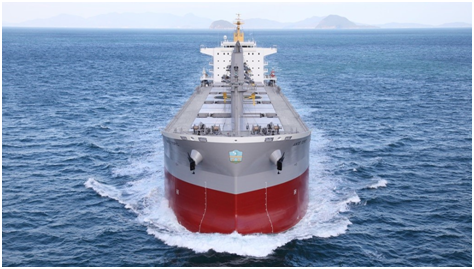
That is how much cargo
the bulk carrier from TOPIC Fleet which is used as the case study in the new EU
project GAMMA, can carry across the world’s oceans. Ocean freight transport
requires large amounts of fuel, mainly made up of fossil fuels today. With the
GAMMA innovation project, which began in January 2024, a wide range of partners
are now working to change that.
This is according to
Kjartan Due Nielsen, Innovation Manager at Icelandic engineering company
Verkís, which is leading the GAMMA project.
“On behalf of the entire group of partners, I can
say that we are proud and grateful that the European Commission has chosen to
support the GAMMA project and efforts to convert international shipping in a greener direction.
We will retrofit a bulk carrier with highly innovative technologies and during
a demonstration campaign we will prove that it is possible to replace auxiliary
generators with a new fuel system that runs on e-fuels. After proof of concept
in GAMMA the next step would be to replace the main engines of a ship for a
full energy transition. All in all, the project is very visionary, and could be
a green game changer for shipping in the future,” says Kjartan Due Nielsen.
Today, long-distance maritime transport supports
80-90 per cent of all global trade. Therefore, there will be considerable
potential for climate-beneficial reductions in converting ocean-going
transportation to green fuels. The International Maritime Organisation (IMO) has set a goal for the
maritime sector to reduce the industry’s greenhouse gas emissions to around
net-zero by 2050. The five-year GAMMA project will contribute to this, say
representatives from the start-up company Aurelia, which specialises in the
concept design of climate-friendly vessels.
An innovative fuel system will be installed.
Ammonia and green methanol will be bunkered on-to the ship and then converted
into hydrogen with cracker and reformer technologies. The hydrogen will be purified and then converted
into electricity with a fuel cell, which will be providing electric energy to
the vessel and thus replacing the use of the auxiliary generators running on
fossil fuel.
In addition to that, the
partners have gone further, since part of the energy necessary to convert to
hydrogen will be supplied by renewable energy, in this case PV panels, which
will be installed on the hatch covers of the bulk carrier. Fraunhofer Institute
provides the conversion technology, Amnis Pura the purifying and the fuel cell
is provided by Ballard Power Systems Europe, meanwhile PV panels will be
provided by Italian company Solbian.
“We have several decades
of experience from innovation within green fuels, and therefore look forward to
contributing to GAMMA with our research to convert e-fuels to hydrogen and look
forward to bringing the new green technologies in the project forward….,” says
Dr Gunther Kolb, Head of Division Energy, Fraunhofer Institute for
Microengineering and Microsystems.
The shipping industry will need to adapt fast to
new IMO rules as most existing commercial vessels run on conventional fossil
fuels. This means the ships will not be commercially nor technically
competitive by 2030 if investment in new ships or retrofitting with greener
technologies will not take place.
The Gamma project began in January 2024 and will
run for five years. Gamma stands for Green Ammonia
and Biomethanol fuel MAritime Vessels and involves 16 partners from Europe:
Verkís (Iceland), ANT Topic (Italy), Fraunhofer (Germany), Aurelia
(Netherlands), Ballard (Denmark), Sea Green Engineering (Italy), Energy Cluster
Denmark (Denmark), SINTEF (Norway), Solbian (Italy), Amethyste (France), Elkon
Elektrik (Turkey), Politecnico di Milano (Italy), ARM Engineering (France),
RINA (Germany), Amnis Pura (Portugal) and Dotcom (Italy).